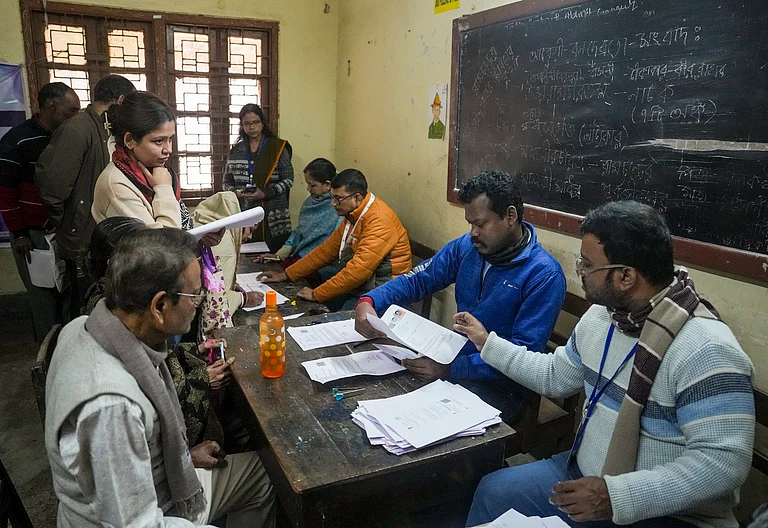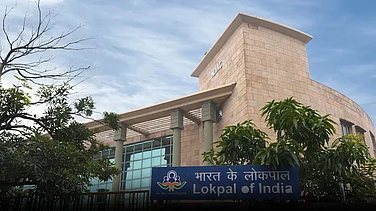The Covid years brought home the stark reality of India falling short in the simple habit of handwashing with soap and, hence, remaining vulnerable to infections and their consequences. Handwashing, together with masking and social distancing, became the three universally agreed critical measures to combat the virus, both before and after the arrival of vaccines. The government advised: “Frequent handwashing with soap (for at least 40-60 seconds) even when hands are not visibly dirty. Use of alcohol-based hand sanitisers (for at least 20 seconds) can be done wherever feasible.”
Wake Up Call
Swachh Bharat Mission (SBM), the largest sanitation programme in the world, focused on elimination of open defecation in its early years, and shifted to freedom from garbage in the second phase. But the iconic mission had to step back in the two Covid years, when saving life and protecting health became primary concerns. During this period the ‘H’ for Hygiene in the WASH (Water, Sanitation and Hygiene) troika was seriously underlined in the public discourse and civic campaigns.
The Scale
UN agencies report that approximately 40% of the global population lacks a basic handwashing facility with soap and water at home. The least developed countries have a much larger share of the plight. Half of the schools, where children spend most of their time, do not have water and soap supported handwash, making 900 million children worldwide vulnerable to transmittable diseases. Healthcare facilities and healthcare workers represent a more difficult case of hand hygiene compliance. In India, the incidence of soap use for washing hands is similarly falling short. The National Annual Rural Sanitation Survey 2019-20 pointed out that while there was an overall observance of handwashing in almost all schools, only a third had both water and soap, and there was significant variation among states. Mid-day meals and food schemes for school children have further underlined the inadequacy of the hand washing facilities.
Swachh Vidyalaya Booster
Swachh Vidyalaya, a programme that started with the commencement of SBM in 2014, played a stellar role in hygiene access and promotion among 300 million school children in terms of requisite infrastructure, operation and maintenance and behaviour change. Swachh Vidyalaya Puraskar and Swachhata Action Plan were instruments to further propel WASH that prominently included handwash with water and soap. Children proved to be agents of change at homes and among local communities. WASH facilities, especially handwashing stations, require consolidation and continuous and sufficient funding for operation and maintenance. In the sharply divided debate on the timing of opening of schools last year, an assurance that came from schools is a settled and somewhat upgraded WASH facility, more specifically handwashing stations with soap, along with properly distanced toilets and clean water stations.
Significant Gains
In Indian traditions, as well as in research findings, handwashing is rated among the assured preventives against infectious diseases. It can reduce diarrhoea among children to about 50% and respiratory infection by 25%, both of which impact child mortality. Much of the preventive impact will be among the poor and vulnerable. Children absenting from schools due to common cold and flu are frequent. The prevalence of stunting among a third of Indian children has a connection with the absence of handwashing.
More Than Worth The Spend
WHO has called for scaled-up action on hand hygiene. Besides households and schools, institutions like anganwadis, health centres, public places and work sites deserve attention. An estimate by these agencies suggest that the return on modest investment in improved hand hygiene can be 15 times, thus preparing humanity against future infections and diseases in a prudent and cost effective way. Scaling up hand hygiene can potentially prevent an estimated 165,000 deaths from diarrhoeal diseases each year. WASH in schools is not only a booster for SDG 6 that relates to clean water and sanitation, but to SDG 4, which is about quality of education. Saturation of handwashing in India can help realisation of SDG 6.2 on sanitation and backup ongoing efforts in nutrition, maternal health and economic benefits.
Swachh Bharat Mode
This may require action in mission mode as demonstrated for the eradication of open defecation under SBM, and now replicated for water supply under Jal Jeevan Mission. Integration and mainstreaming will be the key in developing capacity, enabling environment, meeting supply requirements and galvanising and sustaining demand, which should not be impossible in view of India’s gains from SBM.
Leadership at global and national levels is important, but stakeholders such as private sector, civil society and community influencers need to step in. School organisations and financial institutions have a special role to play. Current institutional arrangements may require strengthening and there may be a case for devising supplementary mechanisms. In the absence of any future emergency trigger to go for handwashing, the programme will need passionate commitment and rigorous implementation exemplified in SBM. Supplying hand hygiene products and services is a specific task to be addressed.
Behaviour Game
Ultimately strategies will have to centre on behaviour change interventions. Habits can change; it is proved through toilet usage in the last eight years. Consolidating and perpetuating a culture of washing hands may not need many miracles. Effective communication campaign can play the anchor as it was in SBM. There are sizeable initiatives to foster the habit of handwashing in the past, both by national and international agencies, but these are not sufficient as remediation is partial. It is time for the big push by getting all hands on the deck.
Akshay Rout Former Director General (Special Projects) Swachh Bharat Mission






















